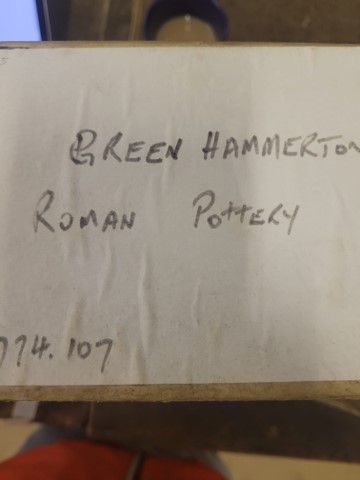In part 1 of this series, we looked at the first set of sources we used to research the archaeology of Green Hammerton. In this second part, we’ll look at the remaining sources of information available to us.
Historic Maps

Historic maps, provided by the National Library of Scotland, can give us clue to how the village has changed over time. You can see an example here from 1848, but we also have maps going further back that this.
Historic maps can give us information about changes in land use and division and how natural features may have changed over time. This could be for example the change in the route of the river.
Yorkshire Museum Records
The Yorkshire Museum holds finds, records and information from across York and North Yorkshire, curating and holding them on behalf of the people of the county.
Most of the artefacts held in the museum archives for Green Hammerton are chance finds, or from drainage or agricultural work at some points over the past 100 years or so. This can include pottery for example:

But, it also includes the stone sarcophagus lid that was found in the parish in the early 70s (more on that in a future post).
Portable Antiquities Scheme
The Portable Antiquities Scheme records find made by metal detectorists, and people just going about their daily lives and work.
Metal-detectorist have legally detected on a number of fields across the parish. The PAS identifies their object puts them on a national database and returns them. There are over 1.5 million objects records in the PAS, of which about 30 were found in Green Hammerton.
These range from the spectacular to the more everyday and range from the Bronze Age through the post medieval period in date.
Find Day
Lastly, we hosted out own ‘Finds day’ asking for people who live in the parish to bring their objects for recording. We photographed each object, recorded what it was, and where it was found.
This helps us to add to our picture of settlement and lands usage in the parish over time. We recorded 70 objects from 7 different places around the parish
These are the sources of information that we’ve used so far, in our next series of posts we will look at what we’ve actually discovered.